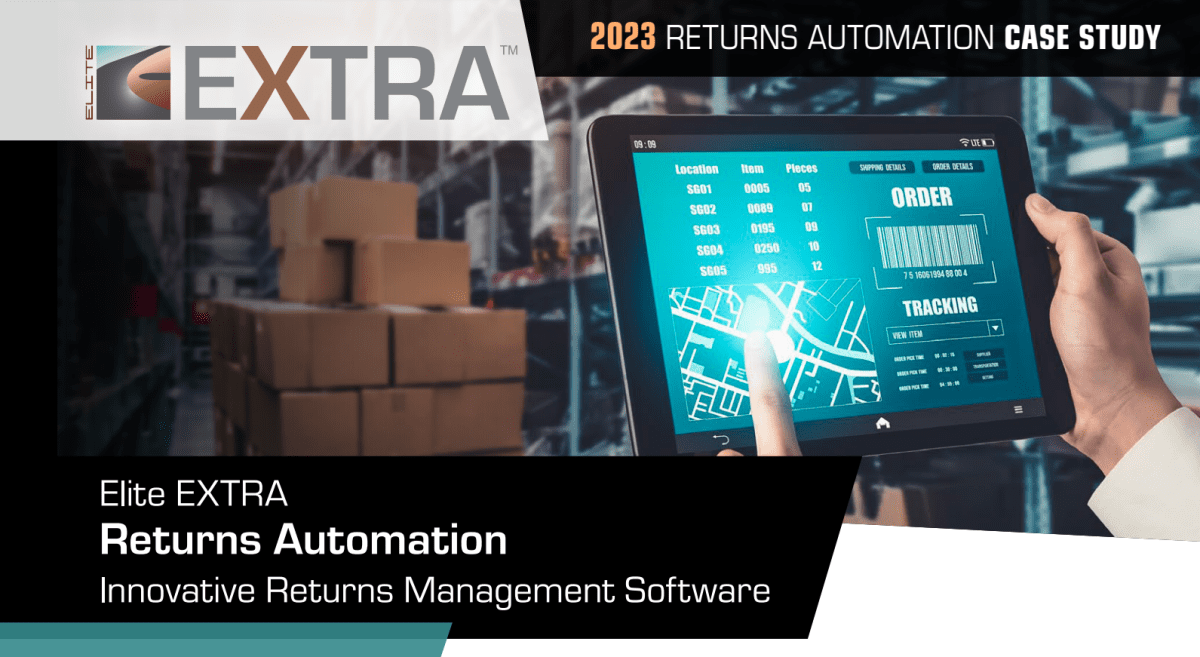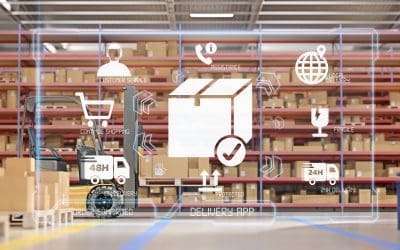
eCommerce returns are a key component of customer experience within the online shopping world. With eCommerce comprising nearly 15% of all retail sale transactions and on the rise, understanding how to run your business to maintain stock levels with items going in and out is key, in addition to understanding how eCommerce returns differ from an in-person retail transaction. eCommerce returns can negatively impact your bottom line if you don’t establish a clear-cut guide and adhere to it, but with the help of several automation options, your returns policy can be your greatest selling point.
Explore this article’s key sections quickly using the table of contents below.
- eCommerce Returns vs Traditional Returns
- Problems With Current eCommerce Returns
- The Cost of Bad Returns
- Expert Tips & Tricks
- The Future of eCommerce Returns
The Unique Nature of eCommerce Returns
eCommerce Returns vs Traditional Returns
eCommerce returns face more general obstacles that in-store returns do not face. When an in-store return happens, for example, an order is essentially voided in real time, the product is evaluated, adjustments are made immediately, and either the merchandise goes back out onto the sales floor or it’s taken to the stockroom to be thrown away. eCommerce returns need additional touches, shipping elements, and time.
eCommerce items have a higher rate of returns because they never get used before they enter the buy back. Where a brick-and-mortar store has an 8-10% return rate, eCommerce easily falls within a 20-30% return rate range. In addition, eCommerce makes the process of return even more complicated with merchants generating special return shipping labels, tracking returns, inspecting items upon receipt, and issuing refunds—all through online portals and digital tracking devices.
eCommerce Return Revenue Losses When Things Go Awry
Merchants lose more than the initial sale when a return goes wrong in eCommerce. They also incur negative:
- Shipping costs incurred by returns, averaging $10-$15 a piece
- Labor costs as pieces need to be checked in and re-shelved by employees
- Devaluation costs of inventory, in particular with perishables and fast fashion
- Square footage of inventory in warehouses stocked with returned items
- Customer service dollars spent responding to return requests
Plus, all the negative inventory and efficiency operational costs associated with a manual process where companies waste 10-15% of their annual revenue on return processing fees. It’s a plague no eCommerce entrepreneur wants to face, especially with little revenue to give.

Return Problems: The Last Piece of the Logistics Puzzle
New Returns Management Is Not a Priority
For many companies, returns management is not a priority. Where so much focus on the logistics innovation has been on technology used to streamline outbound logistics (what goes out), the inbound process (what comes back) has been forgotten. Companies continue to do returns the same way:
- Standard returns require paperwork that asks customers to print and send back with the returned item
- Information about returns is sent and acknowledged, and inventory is changed manually
- Excel sheets of inventory are kept to acknowledge return statuses and manual inventory adjustments
- Poor insight into return tracking
- Inadequate reporting/visibility, warehouse/customer service/finance
Obsolete approaches render ineffective reporting for returns, extended periods, errors, and frustrated customers. When so much revenue depends upon eCommerce order repeat purchases, it’s detrimental.
Ineffective Reporting and No Visibility
With antiquated integration to control returns, businesses don’t have the access they need to the data that could assist in business strategy. Are people returning a product less than expected? When this integration is lacking and tracking/reporting is poor, businesses fail to:
- Understand return patterns that indicate defects/quality issues
- Know what customers do and do not want from returns
- More accurately assess projected inventory levels based on projected returns
- Understand the true cost of returns by department or SKU
- Assess the efficacy of return policies and the efficiency of how quickly it’s done
Companies, with nothing to show for it, fail to depend upon data and analytics to reduce return rates and improve and accelerate operations. When it comes to eCommerce returns management, what isn’t measured cannot be improved.
The Cost of Bad Returns
The expenses associated with failed eCommerce returns are outrageous. Every year, United States retailers have an extra $550 billion in returns lost—and this is on top of eCommerce returns. The company will incur the following on top of these expenses:
- Cash flow issues from not being able to clear inventory off shelves promptly
- Profit margins compromised since anything seasonal cannot be sold
- Customer acquisition costs down the drain since customers will never be buying from this company again with no legitimate return opportunity
- Lost chance to reinvest funds elsewhere since funds are held up with returns
Unless the retail market improves its supply chain for its return process, these costs will increase as additional eCommerce demand occurs.
The Future of eCommerce is Returns Automation
The Future of Returns is Automation via Technological Processing
Returns automation is a method by which eCommerce companies streamline the reverse logistics return process. Through digitizing and automating portions of the returns processing procedure, companies can acheive:
- 80% quicker processing
- 30% better stock precision
Such astonishing statistics reveal the impact Returns Automation can have on an eCommerce business. The right technology turns returns from a cost center to a revenue-generating first-touch opportunity.
Automating Returns
The returns automation solutions of today digitize every aspect of the return process to ensure customers and brands have a consistent experience. For example:
- No paper copy of a return receipt is required with digital return receipt confirmation screens
- Return receipt labels are generated automatically and emailed to the customer
- Ability to see real-time returns still on the way
- Digital documentation of product assessment and outcome
- Automatic triggers for returns and subsequent refunds based on certain parameters
- Integrates with inventory systems for immediate on-hand inventory adjustments
This technology makes the returns experience better, but it also creates data through which these companies can operate more efficiently and decrease return rates in the future.
Customer-Facing Returns Dashboards
The customer-facing returns dashboard is perhaps the latest advancement in eCommerce returns automation. It allows the customer to control how they want to return their product while simultaneously providing them with unprecedented transparency into their return.
It’s also noted that 78% of consumers will attempt to track their return at least three times during the return process, and 67% are more satisfied with their returns experience when they can do so. This one solution reduces customer service inquiries by 50% while promoting loyalty and reliability.
This customer portal makes returns easier than ever because it allows consumers to:
- Initiate a return without needing to ever talk to a customer service agent
- Select different options for returns (send back, drop off, exchange)
- Track a return from start to finish
- Get automated alerts at key moments during the return process
- Accessible return history of their own
This is another convenience for the consumer in an otherwise automated fashion, which relieves operational pressure from the business to focus time and effort on other things.
Dive deeper into the world of reverse logistics by downloading our latest white papers for free!

Case Study: Early Adopters of Returns Automation
This in-depth case study analysis explores how Elite EXTRA Returns Automation has improved returns operations for numerous early adopters!

White Paper: The Reverse Logistics Hassle
Discover the challenges involved with last mile product returns and learn how you can solve the reverse logistics hassle.
Expert Tips and Tricks for Handling eCommerce Returns Properly
Have a Clear Return Policy
The most important way to control returns properly in eCommerce is to have a clear, easy to read, easy to understand return policy and one that’s fair. Professionals in the industry say this means:
- Incorporating everyday terms instead of business jargon
- Detailing time frames, required actions, and refund processes
- Providing extended return policies since it avoids returns in the first place
- Positioning the policy within product description pages and in cart/checkout
- A/B testing policy adjustments to guarantee optimal coverage for you at all times without sacrificing customer coverage
Remember that many people presume your return policy shows how much you stand by your product. A buyer-friendly return policy increases conversion rates since there’s less worry about buying something that can’t be returned.
Use Data to Learn Why Customers Return
Returns automation tools come with a lot of data, and with a lot of data at your fingertips, you can analyze patterns to figure out why customers are returning. For example, you can find out if certain:
- Product types are returned more for quality reasons, with return reasons by category
- Customer segments are more likely to return items
- Times of year have more returns and why, thereby helping you with inventory
- Changes to product description yield lower returns
- Marketplaces have more/less returns than others
It’s not just about enhancing the return experience for the future. This data empowers businesses to adjust in the present—product adjustments, marketing changes, etc.—to avoid needing to make a return in the future.
Use Return Options Intentionally
All returns don’t have to be treated the same. Intentionally using return options can cut costs and increase customer retention:
- Don’t return low-value items when the cost of shipping exceeds the cost of the item and offer refunds instead
- Give store credit with an additional percentage than a full refund
- Implement exchange options
- Create a tiered return shipping approach that considers customer history, loyalty, and item value
- Streamline return process for gift recipients
These logistical ideas relieve the strain on the return processing center and change a potentially poor customer experience into one that encourages them to return. Return processing functions just like a warehouse operation.
Warehouse Operations Optimization for Returns Processing
A significant portion of return processing costs is labor associated with these activities. The most efficient means to accomplish all of the following is:
- Separate return area instead of shipping and packing fulfillment
- Interchangeable trained staff that solely works on returns to ensure standardized treatment
- Mandatory rescan of barcodes for all return activities
- Separate grading of conditions for faster determination
- Separate processing channels for sell, refurbish, liquidation, and destruction
Less time spent on processing and better accuracy if a return is a stand-alone operation instead of a sub-operation.
Integrate Returns with Other Business Units in the Company
Returns are not processed in a bubble. When systems are integrated, it’s beneficial. For example:
- Inventory reflects the fact that a customer has returned something at that date and time and has been completed
- Accounting ledgers reflect returns and liabilities, true expenditures at that date and time
- Customer service knows the status of a return without needing to access another system.
- Marketing data on defective items that cause a return
- Supply chain notifications of excessive defects in quality
All this cross-departmental information fosters the kind of opportunities for communication that’s collaborative about anything and everything that has to do with returns.
Looking Ahead
Returns management software will make returns a potential game changer for eCommerce companies of the future. Companies that adopt automation and foster a customer-controlled means of returning items will do so for business competitive advantage and customer loyalty.
Next generation returns automation software champions the company’s need to transform its mindset about eCommerce returns. From digitization to transparency to customer empowerment, this software caters to the online return process in a certain fashion—and provides analytics to improve the return process.
The eCommerce companies who will navigate this cutthroat environment the best are those who welcome a return—beyond just an adjustment to the financials—as a means for potential profit in the future. Listen to these industry professionals and, with the perks of returns automation, turn what could be an overwhelming eCommerce negative for your company into your competitive advantage.
Want more industry insights?
Subscribe to our newsletter to receive weekly last mile logistics insights directly to your email inbox each week!
Upgrade Your eCommerce Return Process
Creating an effective eCommerce returns process is no small task. It requires answering critical questions — like which capabilities you need, how operations should flow, and how to measure ROI — while also establishing clear policies for your staff and customers. But answering those questions is only the beginning. Success depends on how well you implement your policies and return mechanisms to drive both customer satisfaction and financial performance.
Elite EXTRA’s Returns Automation software is designed to simplify this complex process. Our white paper dives deep into everything you need to know — from key capabilities and operational insights to ROI formulas and analytics strategies. If you’re ready to rethink your returns, reduce costs, and turn reverse logistics into a competitive advantage, download the white paper today. Elite EXTRA has the expertise to help you every step of the way.







